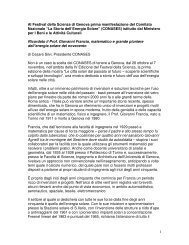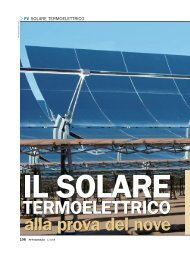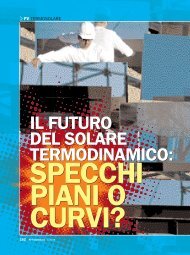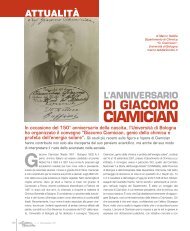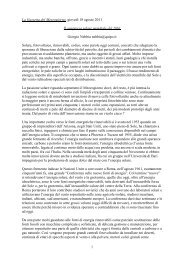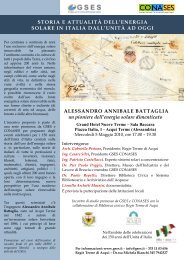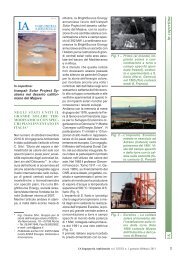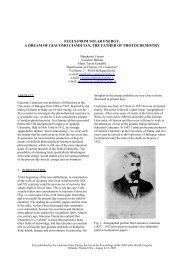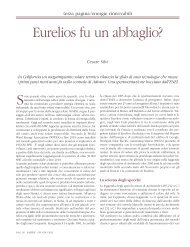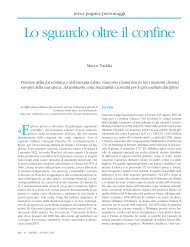The Pioneering Work On Linear Fresnel Reflector ... - GSES
The Pioneering Work On Linear Fresnel Reflector ... - GSES
The Pioneering Work On Linear Fresnel Reflector ... - GSES
You also want an ePaper? Increase the reach of your titles
YUMPU automatically turns print PDFs into web optimized ePapers that Google loves.
on an area of approximately 8.2 x 7.9 m 2 . It had 7 aluminum mirrors, 8 meters long and 1 meter wide,<br />
parallel to each other on an east-west line. Each mirror rotated around its lengthwise axis, concentrating solar<br />
radiation on a linear boiler positioned parallel to the mirrors at a height of about 6 meters. <strong>The</strong> rotary motion<br />
was the same for all the mirrors, and was obtained by means of an electronic command guided by the sun<br />
itself. <strong>The</strong> boiler was slightly less than 8 meters long and 25 centimeters wide. It was protected on the front<br />
(the side facing the mirrors) by the honeycomb structure and on the back by appropriate insulation and a lostheat-recovery<br />
device [15].<br />
Two flat vertical mirrors limited energy loss on the west side in the morning and on the east side in the<br />
afternoon; otherwise, reflected energy would reach the boiler only during the midday hours, due to the short<br />
length of the mirrors. In the design for the large solar plant described in Francia’s patent no. 18634, of which<br />
the Marseilles plant was the first unit, the aluminum-mirror strips were much longer than the boiler is high,<br />
which eliminated the need of protective mirrors on the sides. Likewise, the Marseilles unit was designed to<br />
be scalable; the length of the strips of mirrors could be tripled or quadrupled and their number increased. <strong>The</strong><br />
plant was built with off-the-shelf materials in order to simplify the construction and reduce costs, with the<br />
idea to perfect them based on the experimental results obtained with the prototype. <strong>The</strong> plant generated 38<br />
kg/h of steam at 100 atm and 450°C.<br />
<strong>The</strong> plant was expected to supply around 1200 thermal kWh annually per square meter of mirrors in<br />
Marseille, making a total of 67,200 kWh per year. If the plant had been built in Sicily, Francia calculated<br />
that production would have reached 1600 kWh per year per square meter, for a total of 89,600 kWh annually.<br />
According to Francia’s evaluation at the time, with a large-scale plant, the power output could be much<br />
cheaper per kWh than that generated from oil. For Francia, the use of flat mirrors was fundamental in order<br />
to build large-scale plants, as he stated in his correspondence with M. Touchais, a collaborator of Marcel<br />
Perrot [16] [17].<br />
In the late sixties, Francia, in cooperation with his collaborators, elaborated the "Solar City Project –<br />
Hypothesis for an Urban Structure", by inventing a wholly new kind of urban complex for a population of<br />
around 100,000. This complex relied on the use of solar energy for natural and artificial lighting, for heating<br />
household water, for space heating and cooling, and for the production of electricity. <strong>The</strong> design centered<br />
around repeatable, independent and energetically autonomous units (18). <strong>The</strong> drawing in figure 7, dated circa<br />
1965, shows Francia’s vision of a large LFC integrated in an urban context.<br />
Fig. 7. Francia’s drawings of the envisioned large solar LFC power plant integrated in an urban<br />
context of circa 1965 (Francia Archive, Musil Brescia).<br />
After building his first LFC, Francia built the first PFC in 1965 at the Sant’Ilario solar station and began<br />
focusing mainly on solar towers, on which he devoted his efforts in the following years. He believed solar<br />
energy would become competitive for power generation only when solar boilers were improved to the point<br />
when they could produce steam at pressures above 150 atmospheres and temperatures above 500°C, a goal<br />
that seemed more likely achievable with solar towers than with linear concentration systems at the time. His<br />
work on LFC technology was thus put on the back burner.




